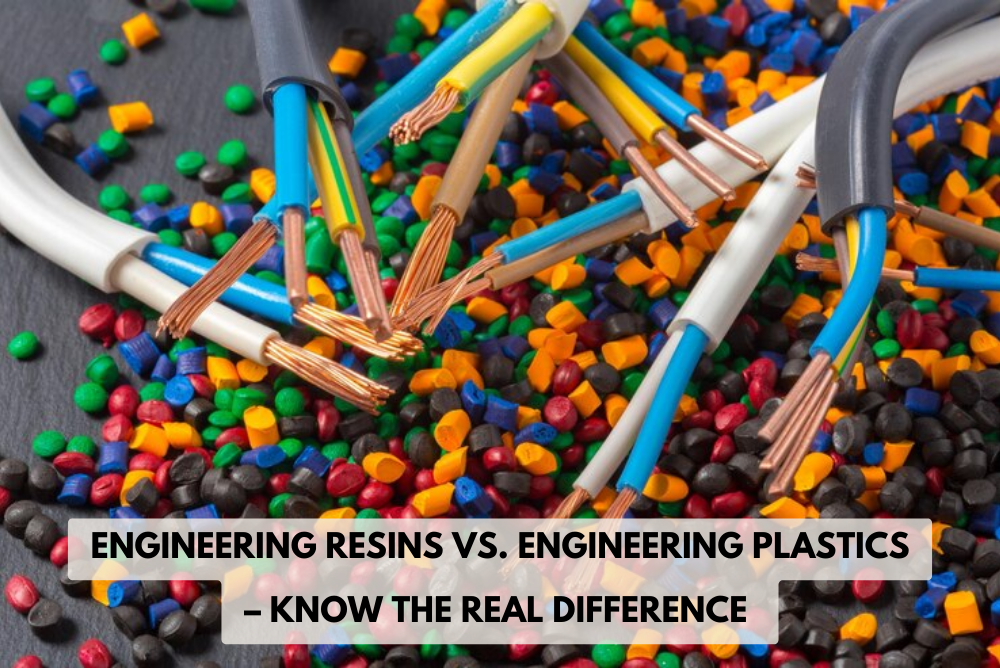Engineering Resins vs. Engineering Plastics – Know the Real Difference
The choice of materials in modern manufacturing plays a crucial role in determining the success and performance of engineered products. This is because the physical and chemical properties of the materials directly impact how well a product functions, especially under various conditions. Among the many options available, engineering resins and plastics are two of the most commonly used materials, each with its own unique characteristics and applications. While they may seem similar at first glance, there are significant differences between them. In this post, we’ll explore what sets engineering resins apart from engineering plastics and why understanding these differences matters.

**Key Differences Between Engineering Resins and Engineering Plastics**
Many people confuse engineering resins with engineering plastics, thinking they are the same. However, they are quite different in terms of structure, performance, and application. Here are the main factors that distinguish them:
- **Chemical Structure:** Engineering resins typically have more complex molecular structures due to precise chemical synthesis. This complexity gives them enhanced mechanical strength, chemical resistance, and thermal stability. Engineering plastics, on the other hand, have simpler polymer chains, which make them easier to process but often less durable in extreme conditions.
- **Thermal Stability:** Engineering resins can withstand higher temperatures without deforming or losing their properties, making them ideal for high-temperature environments. Engineering plastics, while still useful, generally have lower heat resistance and are better suited for moderate temperature applications.
- **Mechanical Properties:** Engineering resins are known for their superior strength, toughness, and stiffness, making them suitable for high-stress or load-bearing applications. Engineering plastics offer good mechanical performance as well, but usually not as high as resins, making them ideal for general-purpose uses.
- **Processing Methods:** Both materials can be processed using techniques like injection molding and extrusion. However, engineering resins often require more specialized processing to maintain their structural integrity, while engineering plastics are more flexible and widely used in mass production.
- **Chemical Resistance:** Engineering resins are highly resistant to solvents, oils, and harsh chemicals, which makes them popular in industries like aerospace and automotive. Engineering plastics, while resistant to some chemicals, may not perform as well in aggressive environments.
- **Cost:** Engineering resins tend to be more expensive due to their advanced properties and specialized manufacturing processes. Engineering plastics are more cost-effective, making them a preferred choice when performance requirements are less demanding.
- **Applications:** Engineering resins are often used in critical applications such as medical devices, aerospace components, and high-performance automotive parts. Engineering plastics, meanwhile, are commonly found in consumer electronics, packaging, and interior automotive parts where cost and aesthetics matter.
Understanding the difference between engineering resins and plastics helps engineers and designers make informed decisions that balance performance, durability, and cost. Whether you need materials for a high-tech project or a commercial application, choosing the right material is essential. If you're looking for reliable suppliers of engineering resins and plastics, Mid Continent Plastics is a trusted name in the industry. With a wide range of materials and expert support, they can help you find the best solution for your needs.
[Contact Us](http://bsg-i.nbxc.com/blog/d176ca43179352f9b7550a83fb03a8db.png)
Filament Winding Fittings,Marine Pert Plastic Pipe,Marine Pert Plastic Pipe Fittings,Marine Pert Plastic Pipe For Water Supply,Marine Polyethylene of raised temperature resistance
Jingjiang Haihong Plastic & Rubeer Science -Technology Co.,Ltd , https://www.marineplasticpipe.com